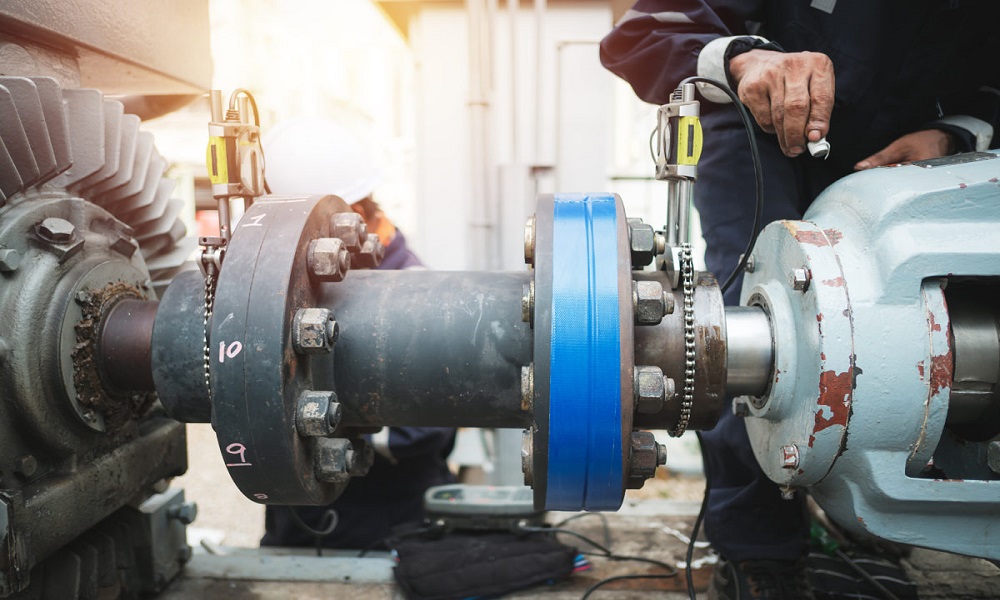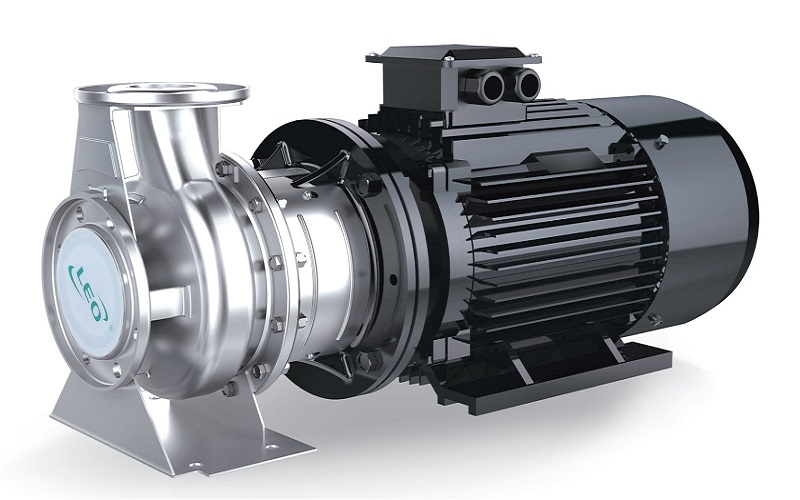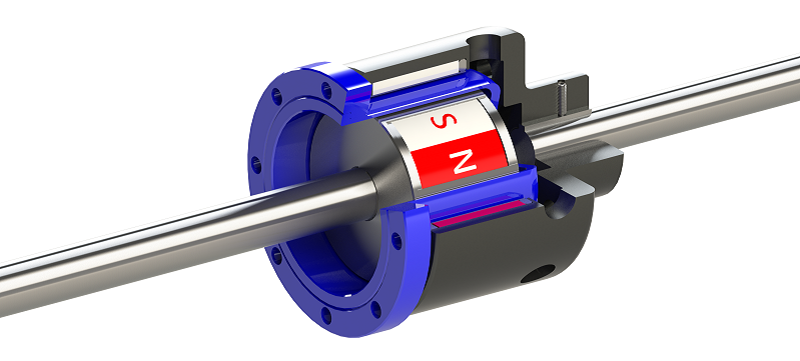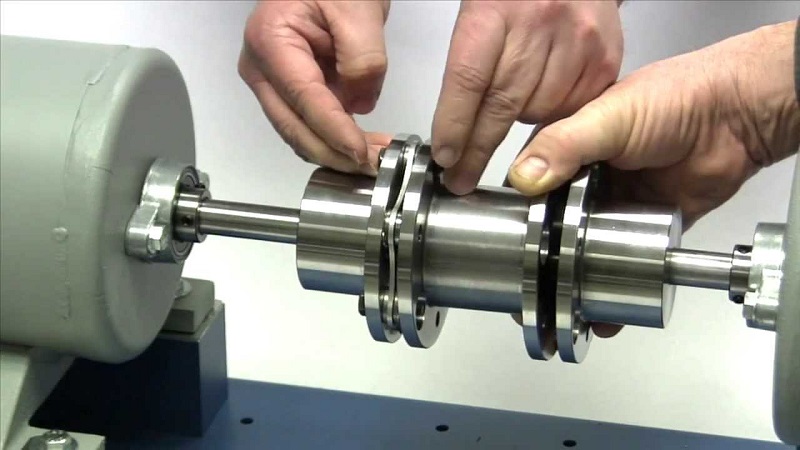When selecting a new pump, the selection of the coupling is one of the most crucial parts. Like everything else on the pump, selecting the right coupling for the application can have a positive or negative impact on the pump’s lifetime performance. The different types of these couplings are important components in keeping your pump equipment functioning as efficiently as it should be. In this article, we discuss the various types of pump couplings. Follow this new blog in Linquip to find out more.
What Are The Different Types of Pump Couplings?
-
- Rigid Couplings
- Flexible Couplings
- Magnetic Couplings
Rigid Couplings
As their name suggests, rigid couplings connect the pump and motor shafts very firmly, which allows them to transmit more power to the pump than flexible couplings of comparable size. They also benefit from a simpler, more cost-effective design. However, rigid couplings can’t handle any shaft misalignment without high stress on the bearings and seals as are unable to absorb any vibrations from the pump running, or thermal expansion. They are usually used for applications where misalignment is not a concern, for example where the shafts have been precisely positioned in a perfect lateral and angular alignment at installation. The vertical clap couplings are an example of rigid types of pump couplings.
-
Vertical Clamp Couplings
The vertical clamp couplings adjust the pump runout to maximize seal and bearing life is a rigid coupling. These rigid couplings are designed for vertical pumps where an adjustable pump lift is needed. These couplings give the user the ability to easily change the position on the shaft as well as the amount of pump rotor lift.
Because of the keyless connection, there is no need for the vertical key to carrying torque or for the split horizontal key to holding the weight of the pump rotor. One-half of the clamp coupling slides onto the driving shaft and clamps into place while the other half clamps onto the vertical pump shaft. The two halves are positioned in such a way that the gap between the two is equal to the amount of lift needed on the pump rotor. Once each half is tight, the connecting bolts are installed, and as they are tightened, the bottom half of the clamp coupling, along with the pump rotor, is lifted the correct amount.
- Capable of handling an enormous amount of thrust load, perfect for heavyweight pumps
- Reduces maintenance time
- Increases the overall performance of the system
Flexible couplings
Unlike rigid couplings, flexible couplings can accommodate some movement e.g. vibrations and thermal expansion without damage. This makes them ideal for applications where there is a degree of unavoidable misalignment between the drive and pump shafts. As they can absorb vibrations well, they can also be used to reduce excessive operating noise. With these benefits come a more complex, expensive design. However, as flexible couplings protect the shaft and bearings from damage and premature wear, there are maintenance savings to be had in the long run.
The followings are four common types of flexible couplings each better suited to different applications.
-
Gear Couplings
Gear Couplings are a much older design, and although no longer as popular as their counterparts, but are still found in large-sized pumps. Gear couplings have the advantage of being mechanically flexible, meaning there can be a degree of misalignment between the pump and the motor.
These types of pump couplings are constructed with a sleeve containing internal teeth that mesh with teeth on the outside of the hubs. The fit of the teeth in a gear coupling allows for misalignment, but the degree of angular misalignment compensation depends on the contour of the gear teeth and the clearance between them. Because of their design, these torsionally stiff couplings can withstand some shock loading, but they cannot absorb significant amounts of it.
- Suitable for applications that require torsional rigidity
- Popular for both high-speed, high-horsepower, and high-torque, low-speed applications
- Requires special lubrication
- Requires periodic inspection (pump must be shut down)
- Requires a fair amount of maintenance and care
- Not good for high-temperature applications, 350ºF maximum
- Vulnerable to axial misalignment failures
- Fails without warning
- 3 to 5 years of life expectancy
-
Grid Couplings
Grid couplings allow for flexibility and efficiency at high speeds or low speeds with high torque. These couplings consist of two grooved flanged hubs connected by a tapered steel spring in the form of a grid. Grid couplings are most likely found on big pumps with large motors and high torque applications.
Their misalignment capabilities are not as great as elastomeric couplings, so the alignment of the pump shafts is more critical. They cannot accommodate misalignment without imparting high radial loads on the bearings. Replacing these types of couplings requires moving the equipment, replacing, and realigning. These pump couplings require more maintenance hours and lost production time than the elastomeric coupling.
- Transmits high levels of torque through a spring set
- Can operate up to 400 hp/100 rpm
- Requires regular lubrication to avoid wear, and this means shutting down the pump and disassembling the coupling.
- Reduces vibrations and cushions shock loads
- The pump must be shut down for disassembling the coupling
-
Disc couplings
Disc couplings are extremely uniform in design and can rotate at high speeds. Pumps operating at high RPMs are good applications for these well-balanced, smooth operating devices. These couplings are quite complex designs and are extremely sensitive to misalignment and axial movement. They are ideal for medium to high torque applications in marine, power generation, API, and critical process industries. These types of pump couplings are best applied where some torsional rigidity is needed, but some allowance for misalignment is also required.
Disc couplings are more accepting of high torque than elastomeric couplings and are generally more expensive. If these couplings need repair, they can be rebuilt on-site without removing the shaft hubs. Rebuilding can often be done for less than 20% of replacement.
- Able to perform at high temperatures, up to 750ºF
- Does not need lubrication
- Requires minimal maintenance
- Can be inspected whilst running
- About 20 years of life expectancy
-
Elastomeric Couplings
Elastomeric couplings are the most common coupling used today. They’re found on almost every small to a mid-sized pump installed due to their quick and easy installation and their innate ability to absorb all types of shock, misalignment, and end float. The shear jaw and bonded tire couplings are examples of elastomeric types of pump couplings.
They consist of two metal hubs that connect to the motor and the pump shaft and between them is hard rubber. Spacer designs are sometimes needed depending on the distance. If a large distance between shaft ends exists spacers are incorporated.
Oftentimes the only piece that fails is the insert, which is relatively inexpensive to replace. The elastomeric coupling is a great choice for many applications.
- Requires no maintenance and no lubrication
- Not suitable for very high torque applications
- Sensitive to chemicals and high temperatures
Magnetic Couplings
Magnetic couplings differ to rigid and flexible as rather than a mechanical shaft, the motor is coupled to the pump by a magnet. Like all other couplings, these couplings are designed to transfer torque from one shaft to another. But what sets magnetic couplings apart, is that they do this without a physical mechanical connection. This makes them suitable for fluid pumping applications since the connection can be made through thin barriers, which help maintain a hermetically sealed rotary feedthrough.
With magnetically coupled pumps there is a small air gap between the magnet and the motor and pump. As there is no physical contact, misalignment and thermal expansion are not a problem. The absence of a mechanical seal also eliminates the chance of leakages, making a magnetic drive pump ideal for handling aggressive or hazardous fluids.
Magnetic couplings are only suited for clean liquids as the presence of any particles can be problematic as they stick to the magnet. They are also sensitive to extreme operating conditions; if excessive torque exceeds the capabilities of a magnetic coupling, the magnetics may decouple, and the pump shaft will slip causing stoppages. Therefore, when selecting a magnetic coupling, you need to be sure that is aligned with the power of the system.
Some notes on magnetic coupling:
- Can be used to transfer power to centrifugal pumps
- Loss of energy at the coupling interface due to magnetic resistance
- Provides thermal isolation so no transfer of heat can take place
- No contacting parts in the coupling
- Has a built-in safety feature (in the event of an overload on the coupling, it will shift to the next position and keep going)
- When heavy loads or load spiking occurs, the overload protection of the coupling can be dangerous.
- No external power source is needed due to using permanent magnets
- Only handles light torque loads and applications with either gradual starts or very low rotational inertia
- Large in diameter, considering relatively light torque load
- Has moderate radial loads on support bearings
There are many factors to evaluate when selecting a coupling. In addition to the application conditions, system designers and users should consider other factors including duty cycles, environmental conditions, degree of maintenance, overall cost, and expected service life. Familiarity and availability of a given coupling may also impact your final decision.
If you enjoyed this article in Linquip, let us know by leaving a reply in the comment section. Is there any question we can help you through? Feel free to sign up on our website to get the most professional advice from our experts.
Buy Equipment or Ask for a Service
By using Linquip RFQ Service, you can expect to receive quotations from various suppliers across multiple industries and regions.
Click Here to Request a Quotation From Suppliers and Service Providers
Read More on Linquip
- Types of Centrifugal Pumps: All Classification & Working Principles
- Types of Submersible Pumps: All Classification With Details
- Types of Shaft Couplings: A Simple Guide to The Types
- Advanced Guide: Types of Rigid Couplings
- Different Types of Hydraulic Pumps: a Complete Guide
- Different Types of Pumps: Ultimate Guide in 2021
- The Practical Guide To Types of Coupling in 2021
- Types of Gear Coupling: a Basic Yet Crucial Description of the Types
- Types of Water Pumps and Their Principles
- Types of vane pumps: review the types, select the best
- Types of Piston Pumps
- Types of Fire Hydrant Systems
- Types of Dynamic Pumps
- Types of Fuel Pump






